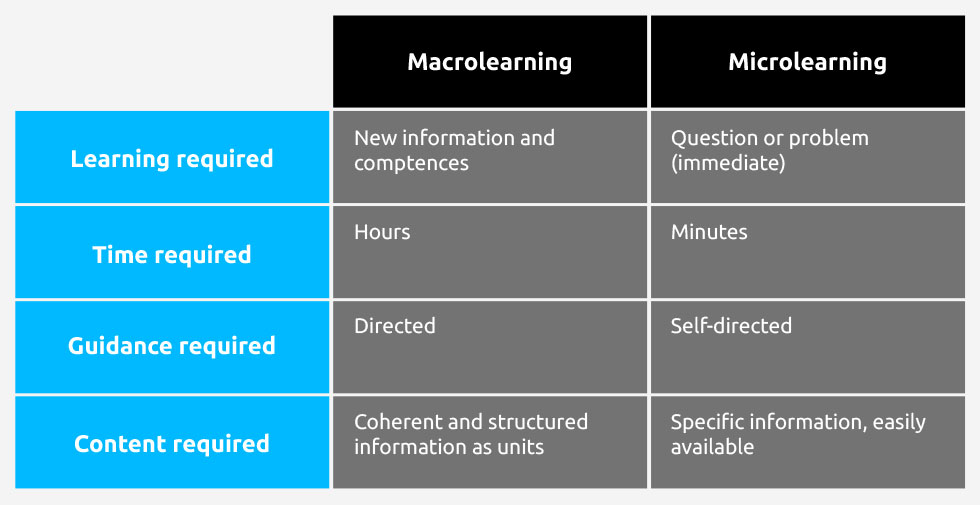Measuring learning in an organization – the impact of analytics on training
Together with versatile analytics tools, data from the learning environment can be refined from single grains of sand into a meaningful overview.

The digital transformation of learning and the analytical tools of today offer new ways for organizations to arrange and develop training. A good training environment serves the needs of the organization as well as those of individual learners. When designing training solutions, the changes and opportunities introduced by digitalization and analytics should be viewed from both perspectives.
For individual learners, it is important for the training to be smooth and meaningful, and for it to genuinely support their development at work and the acquisition of new information.
For the organization, the priority is arranging cost-efficient training and having the training result in improved competence.
This means finding a balance between cost-efficiency and the quality of the training. An IMD working paper indicates that organizations often see the digital training solutions as a way to save on training costs.
By focusing on cost only, the organization may well end up with an incomplete and fragmented solution that does not actually improve competence. To make training a genuinely productive part of the organization’s operations instead of just an expense, its effectiveness must be measurable.
The organization’s perspective: measuring learning
Measuring the effectiveness of training and predicting development needs is challenging and sluggish by traditional means as, by nature, learning is difficult to translate into something measurable. Typically the effectiveness of training only shows when its know-how is applied in daily work tasks.
To give a practical example, effectively implemented workplace safety training correlates with a decrease in workplace accidents. In an ideal situation, there would be no accidents in the first place, indicating a sufficient and reliable level of competence.
Digital learning environments allow usage data and learning data to be collected extensively and in great detail. Digital solutions allow the analysis of user actions in the learning environment and with the learning materials down to single clicks.
Together with versatile analytics tools, this data can be refined from single grains into a meaningful overview. For instance, if several learners have paused and rewound a certain segment of a video lesson, this may indicate that the content is difficult to understand, meaning it should be improved upon.
Digital learning platforms and analytics allow:
- Training and learning data to be obtained by means other than just surveys and tests
- The strengths and weaknesses of the environment and the materials to be discovered more readily, aiding in their further development
- Future training to be more accurately predicted
- Better evaluation of the effectiveness of the training based on usage and learning data.
Understanding the learner’s perspective: Macrolearning and Microlearning
When analyzing online training and its effectiveness for individual learners, the learning experience can be assessed on two levels: macro and micro. These are complementary ways of learning that focus on different stages in the learning process.
Learning new things and topics in large units and over a long period of time is considered macrolearning. Macrolearning is based on comprehensive and diverse learning materials with the learning situations commonly restricted to a time and a location. Courses, lectures and workshops are examples of macrolearning.
Conversely, microlearning is related to specific and detailed information the learner requires immediately to continue working. This is also known as just-in-time training. For example, seeking out an answer in the learning material or researching a new term online is microlearning.

Employee onboarding is an example of training where it is important to utilize both macro- and microlearning;
Training used to orientate someone in the operations and working methods of an organization is typically laden with content and information, as it is aimed at getting the employee up to speed as quickly as possible.
However, it is difficult to absorb a large amount of new information about practical matters, as the practice will only come through the actual work, which is a backwards process in terms of learning. When the time comes to apply the training into practice, some of the details may already have been forgotten.
Having the onboarding materials available in an easily-navigated environment allows employees to find answers on their own, regardless of time and location, as they need them – i.e. just-in-time.
Conclusion
If the training environment and learning experience are optimized with the help of good analytic tools, the training supports also business goals –such as sales, international growth, or the decrease in number of accidents– and learning and development become profit center instead of a cost center.
The digitalization of learning is already an unquestionable part of learning and the implementation of different types of training, and its significance seems to only increase as technologies and tools improve.




